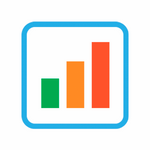Unlock a world of possibilities! Login now and discover the exclusive benefits awaiting you.
Welcome to
Qlik Community!
Recent Discussions
-
Qlik sense upgrade from version August 2022 to the version february 2024
Hello All, I'm programming the qlik sense windows upgrade to February 2024. I found so many documents that explains the steps needed but i need to kno... Show MoreHello All,
I'm programming the qlik sense windows upgrade to February 2024.
I found so many documents that explains the steps needed but i need to know if there is any specific issue or tips related these two version ?
Do i have to upgrade the Postgre SQL ?
What are the best steps and tips to do it, in order to back up my existing version?
I lost my certifications passwords, how can i back up them , do i have to recreate them before the upgrade ?
Do i need a test enivrement ?
Noted that i have a multi-node architecture, a central node for production and an other for développement.
I'm loking for your help and your advice.
Thank you.
-
Distinct based on several fields
Hi, I need to count distinct rows where aggr Sum is equal or bigger than 10.I tried use aggr() function in the sheet measures but it doesn't work, so... Show MoreHi,
I need to count distinct rows where aggr Sum is equal or bigger than 10.
I tried use aggr() function in the sheet measures but it doesn't work, so I created 2 flag fields:
* flagA - 1 if total sum by month & ID >= 10
* flagB - 1 if total sum by month & ID & type >= 10.
Now, my problem is to make a distinct count on several fields.example:
Month ID Type Sum flagA flagB 1 00001 a 5 0 0 2 00002 a 9 1 1 2 00002 a 3 1 1 2 00002 b 4 1 0 2 00002 b 5 1 0 2 00003 a 11 1 1 2 00003 b 11 1 1 3 00002 a 10 1 1 3 00003 a 9 0 0
count ID where monthly sum is equal and bigger than 10:
00002, month = 2, sum = 21
00003, month = 2, sum = 22
00002, month = 3, sum = 10
So, the measure should be the count of flagA where flagA=1 and distinct Month&ID, so 3.count ID where monthly sum by type is equal and bigger than 10:
00002, month = 2, type = a, sum = 12
00003, month = 2, type = a, sum = 11
00003, month = 2, type = b, sum = 11
00002, month = 3, type = a, sum = 10
So, the measure should be the count of flagB where flagB=1 and distinct Month&ID&type,
so when selecting type = a, the result is 3, and when selecting type = b, the result is 1.Love for some help.
Thanks! -
Custom Colors for a drilldown master item
Hi folks, I want to assign a specific color for each category of [Agent supergroup] in my drilldown master item, much like asked here. I figured that... Show MoreHi folks,
I want to assign a specific color for each category of [Agent supergroup] in my drilldown master item, much like asked here.
I figured that I could color my graph by expression, with an expression (or, as suggested, an expression stored as a second master item) starting like this
=If(GetSelectedCount([Agent supergroup])<>1, Pick(Match([Agent supergroup], 'Hospitals', 'Private laboratories', 'Private practices', 'Other'), '#006580', '#C8C7A9', '#AC4D58', '#99CFCD'), ...)Without further colors instead of the '...', all subcategories will be colored gray. I guess that I could add more Ifs for [Agent group] and [Agent], but since
- I do not know if the values in the underlying table will change and
- I care only about color consistency across different graphs,
I just want to assign [Agent group] a color by its position in the list of possible values:
Concat({$<[Agent group]=>} DISTINCT [Agent group], ',')So I constructed an expression around this to get a color number between 1 and 12 and then added Pick() as follows:
If(GetSelectedCount([Agent group])<>1, Pick(Mod(Len(KeepChar(Left(Concat({$<[Agent group]=>} DISTINCT [Agent group], ','), Index(Concat({$<[Agent group]=>} DISTINCT [Agent group], ','), [Agent group])-1), ',')), 12)+1, '#006580', '#C8C7A9', '#AC4D58', '#99CFCD', '#E1DAD5', '#83AF9B', '#E0BD8D', '#8A85C6', '#10CFC9', '#A16090', '#87205D', '#C4CFDA'), ... )(These are the 12 default Qlik Sense colors.)
My test-KPI shows the correct color number, but the categories of [Agent group] in the graph are still one and the same color.
Do you have a hint? -
Sélection d'une unique ligne dans une table
Bonjour, J'ai débuté Qlik Sense il y a quelques jours, et après avoir cherché pas mal de temps, je n'ai pas trouvé la réponse à ma question : J'ai u... Show MoreBonjour,
J'ai débuté Qlik Sense il y a quelques jours, et après avoir cherché pas mal de temps, je n'ai pas trouvé la réponse à ma question :
J'ai une table qui contient des champs, et je voudrais que lorsque je clique sur un champ, toute la ligne devient sélectionnée. Sauf que, quand je clique sur cette ligne, il faut que la table reste inchangée, que ça n'affecte pas les autres lignes de celle-ci, mais il ne faut pas que ce soit en "Read-Only" car la ligne sélectionnée d'interagir avec une autre table.
Merci d'avance pour vos réponses, je reste disponible si vous avez des questions. 😄
-
Qlik asked for Windows Credentials when we start new session on browser
When we login to Qlik, we are being asked for our Windows username and password. This didn’t used to happen as we would be logged into the Insight hub... Show MoreWhen we login to Qlik, we are being asked for our Windows username and password. This didn’t used to happen as we would be logged into the Insight hub automatically? can someone help me on this Many Thanks
Currently I am using Qlik Sense Nov 2022 Patch 12.
-
Convert Zero to Nulls in UI measure
Hi all, Is it possible to convert zeros into Nulls as a calculation result of a measure? For example,The second measure (in purple) get 0 in 2024-01 t... Show MoreHi all,
Is it possible to convert zeros into Nulls as a calculation result of a measure?
For example,
The second measure (in purple) get 0 in 2024-01 to 2024-03, so the first value should be in April.
I made it with If function but it's less convenient in complex measures.
It didn't work if I just uncheck 'Include Zero Values'.
I'm looking for a function like Alt that can convert the Nulls to Zero.Thanks!
-
Problem with big numbers (more than 14 digits)
Hi guys ( stalwar1, hic , petter-s , mto ..)I have a problem to load BIG NUMBERS (more than 14,15 and even 17 digits).In fact, when It's more than... Show MoreHi guys ( stalwar1, hic , petter-s , mto ..)
I have a problem to load BIG NUMBERS (more than 14,15 and even 17 digits).
In fact, when It's more than 14, Qlik can't seem to recognize the numbers as numbers anymore.
I've tried to surround the field by evaluate when loading it (evaluate(Field) instead of Field)
and this seemed to work at first sight. In fact, the numbers that were imported as Zero are now being well interpreted but then I've found out that there are still some numbers imported as 0 (even bigger numbers) ! So the Evaluate() doesn't seem to work for all the cases...
The question is: how can I import all the numbers (whatever how BIIIIIG they are), and still load them as numbers??)
ps: My source is REST; thus, I'd have to handle things within Qlik.
Thanks !
-
Filtering Relevant Data
Dear all, I’m quite new to QlikSense and I’m encountering some issues. In short, I have multiple datasets loaded into the dashboard. Dataset1 conta... Show MoreDear all,
I’m quite new to QlikSense and I’m encountering some issues.
In short, I have multiple datasets loaded into the dashboard. Dataset1 contains project information, names, funding, etc., and Dataset2 contains specific deliverables that are mapped in the dashboard. The datasets are synced using a deliverable number that is common in both files.
The problem is there are more projects in Database1 than there are projects with deliverables in Dataset2 that are relevant to be shown in the dashboard. In all charts and tables in the sheet, I only need information from Dataset2 filled with info from Dataset1.
For example, to show only relevant projects and their funding per beneficiary, I added an ‘x’ column with values of 1 to the second dataset. In charts and tables, I use set modifiers {<x = {1}>} to prevent them from being displayed, etc. However, these can be displayed when selected (see figure).
There must be a solution for this, but I can’t find it, and working this way will only create more problems.
Could you please suggest how I can filter only relevant information from the first dataset as a master filter or while loading the data?
Thank you very much in advance 🙂
-
Using tUnpivotRow with Excel files with different schemas
Hi everyone, I've created a Job that reads an Excel file and pivots some columns to rows. So far so good.This is the Excel file: Even though I'm usin... Show MoreHi everyone,
I've created a Job that reads an Excel file and pivots some columns to rows. So far so good.
This is the Excel file:Even though I'm using a dynamic schema (*) to read the file, I still have to know the real schema of the file so that I can configure the tExtractDynamicFields component correctly:
Then I use the tUnpivotRow component like this (because these columns are always constant):
And I get the desired result:
Thus far all is good.
The problem starts when I start getting Excel files with different schemas (mind you, the first 3 columns are always the same: Name, Surname, City).
(*) This is why I'm using the dynamic schema to read the Excel file.
How do I work with these files? How do I make my Job ready for any Excel that comes with a different schema than the one I'm using in this Job?
Thank you,
Rui -
Sharing bookmark
Hi all, Sorry for the newbie question. I would like to share a bookmark of a published dashboard so that other users can see my selection directly. ... Show MoreHi all,
Sorry for the newbie question. I would like to share a bookmark of a published dashboard so that other users can see my selection directly.
From the explanatory video, I see that after creating the bookmark there should be the option "Copy link" by clicking on the label of the bookmark.
However, in my case, this option does not exist.
Any suggestion on what I am doing wrong?
Thanks!

Lots of Qlik Talend Data Integration Sessions!
Wondering about Qlik Talend Data Integration Sessions? There are 11, in addition to all of the Data & Analytics. So meet us in Orlando, June 3 -5.
Your Opinion Matters
Help us improve your Qlik experience by participating in our customer survey! The survey will be live from May 27 - June 14.

Qlik Community How To's
Browse our helpful how-to's to learn more about navigating Qlik Community and updating your profile.

Your journey awaits! Join us by Logging in and let the adventure begin.
Customer Story
Accelerating Decision-Making with Qlik Insights
Qlik enhances decision-making with high-speed insights, as Mayborn Group integrates data from various functions across their global operations, gaining a competitive edge in the childcare industry.
Customer Story
Efficiency in Agriculture: Nortera's Qlik Triumph
Nortera leads agricultural manufacturing analytics and automation with Qlik, reducing short-shipment rates and annual savings in water consumption.
Customer Story
Revolutionizing aircraft production through Data Analytics
Qlik Data Integration transforms Airbus' aircraft production, leading to over 150 replication tasks and informing more efficient analysis.
Location and Language Groups
Choose a Group
Join one of our Location and Language groups. Find one that suits you today!
Healthcare User Group
Healthcare User Group
A private group is for healthcare organizations, partners, and Qlik healthcare staff to collaborate and share insights..
Japan Group
Japan
Qlik Communityの日本語のグループです。 Qlik製品に関する日本語資料のダウンロードや質問を日本語で投稿することができます。
Brasil Group
Brazil
Welcome to the group for Brazil users. .All discussions will be in Portuguese.
Blogs
Community News
Hear from your Community team as they tell you about updates to the Qlik Community Platform and more!














